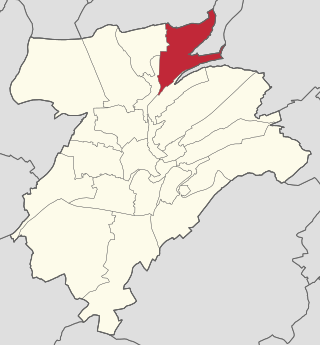Related Research Articles

The Bessemer process was the first inexpensive industrial process for the mass production of steel from molten pig iron before the development of the open hearth furnace. The key principle is removal of impurities from the iron by oxidation with air being blown through the molten iron. The oxidation also raises the temperature of the iron mass and keeps it molten.

Sir Henry Bessemer was an English inventor, whose steel-making process would become the most important technique for making steel in the nineteenth century for almost one hundred years. He also played a significant role in establishing the town of Sheffield, nicknamed ‘Steel City’, as a major industrial centre.

Spiegeleisen is a ferromanganese alloy containing approximately 15% manganese and small quantities of carbon and silicon. Spiegeleisen is sometimes also referred to as specular pig iron, Spiegel iron, just Spiegel, or Bisalloy.

Henry Louis Le Chatelier was a French chemist of the late 19th and early 20th centuries. He devised Le Chatelier's principle, used by chemists and chemical engineers to predict the effect a changing condition has on a system in chemical equilibrium.

Frederick Brian Pickering, AMet, DMet, FIMMM, CEng, FREng was an English metallurgist. His research and development activities contributed significantly to the creation of stronger and lighter steels.

Siderite is a mineral composed of iron(II) carbonate (FeCO3). Its name comes from the Ancient Greek word σίδηρος (sídēros), meaning "iron". A valuable iron ore, it consists of 48% iron and lacks sulfur and phosphorus. Zinc, magnesium, and manganese commonly substitute for the iron, resulting in the siderite-smithsonite, siderite-magnesite, and siderite-rhodochrosite solid solution series.
Alexander Parkes was a metallurgist and inventor from Birmingham, England. He created Parkesine, the first man-made plastic.

Sir Isaac Lowthian Bell, 1st Baronet, FRS was a Victorian ironmaster and Liberal Party politician from Washington, County Durham, in the north of England. He was described as being "as famous in his day as Isambard Kingdom Brunel".

Sidney Gilchrist Thomas was an English inventor, best known for his role in the iron and steel industry.
Percy Carlyle Gilchrist FRS was a British chemist and metallurgist.
John J. Jonas was born in Montreal and graduated from McGill University with a bachelor's degree in Metallurgical Engineering in 1954. He later attended Cambridge University on an Athlone Fellowship and received a Ph.D. degree in Mechanical Sciences in 1960. On returning to Montreal, he began teaching "mechanical metallurgy" at McGill and built up a research laboratory that includes a number of specialized testing machines and is particularly well equipped for experimental investigations in the field of high temperature deformation.

Dommeldange is a quarter in north-eastern Luxembourg City, in southern Luxembourg.

The Teesside Steelworks was a large steelworks that formed a continuous stretch along the south bank of the River Tees from the towns of Middlesbrough to Redcar in North Yorkshire, England. At its height there were 91 blast furnaces within a 10-mile radius of the area. By the end of the 1970s there was only one left on Teesside. Opened in 1979 and located near the mouth of the River Tees, the Redcar blast furnace was the second largest in Europe.

The Gilchrist–Thomas process or Thomas process is a historical process for refining pig iron, derived from the Bessemer converter. It is named after its inventors who patented it in 1877: Percy Carlyle Gilchrist and his cousin Sidney Gilchrist Thomas. By allowing the exploitation of phosphorous iron ore, the most abundant, this process allowed the rapid expansion of the steel industry outside the United Kingdom and the United States.

Edward Windsor Richards, known as Windsor Richards, was a British engineer, and steel maker.
Edward Pritchard Martin was a British engineer, and steel maker.

Bolckow, Vaughan & Co., Ltd was an English ironmaking and mining company founded in 1864, based on the partnership since 1840 of its two founders, Henry Bolckow and John Vaughan. The firm drove the dramatic growth of Middlesbrough and the production of coal and iron in the north-east of England in the 19th century. The two founding partners had an exceptionally close working relationship which lasted until Vaughan's death.

John Percy FRS was an English metallurgist.
Thomas Andrews FRSE FRS FCE ICE was an English metallurgical chemist and ironmaster.
John Devonshire Ellis was a steelmaker in Sheffield, England. He developed armour-plating for warships, and worked on the Bessemer process of steelmaking.
References
- ↑ "George James Snelus". Grace's Guide. Retrieved 9 September 2020.
- 1 2 "Fellow details". Royal Society. Retrieved 9 September 2020.
- Ure, Andrew (1856). A dictionary of arts, manufactures and mines. Vol. 2. New York: D. Appleton & Company. pp. 733–734.
- Jeans, William T. (1884). The creators of the age of steel. New York: Chapman & Hall. pp. 318–338.